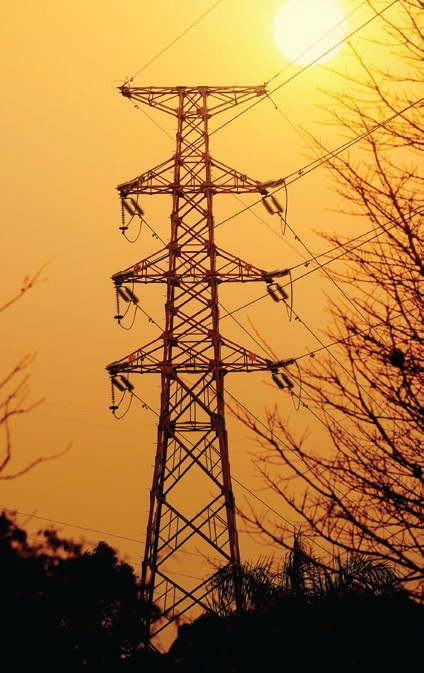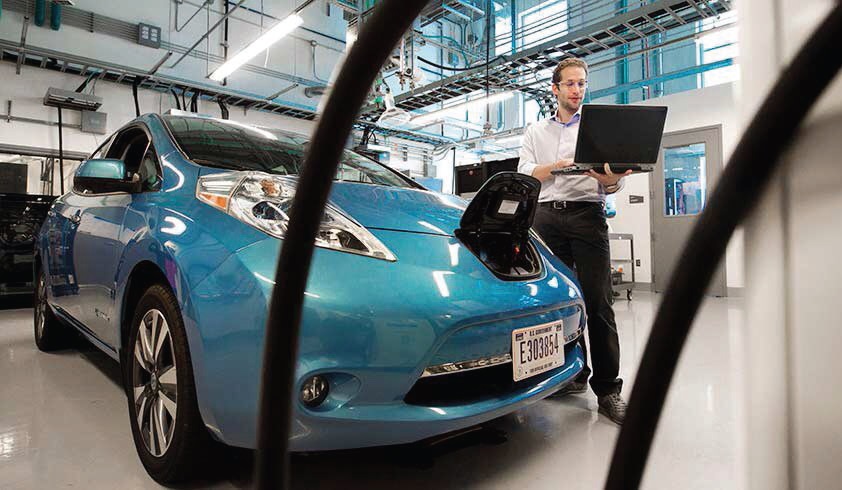How will the growing use of plug-in electric vehicles affect the power grid?
Dr. Neil Canter, Contributing Editor | TLT Tech Beat April 2018
A new model based on a bottom-up approach quantifies consumer energy-use behavior and real-world vehicle usage.
 © Can Stock Photo / dashark
© Can Stock Photo / dashark
KEY CONCEPTS
•
A new study suggests the increasing use of plug-in electric vehicles might negatively affect the power grid.
•
The overall effect of more plug-in electric vehicles on the aggregate power grid is limited.
•
If local clusters of consumers charge their plug-in electric vehicles at the same time, the study concludes that the power grid will be stressed.
Demand for plug-in electric vehicles (PEVs) is growing globally as regulations are motivating automotive OEMs and consumers to move away from cars powered by internal combustion engines. In 2016 the number of PEVs in use globally was greater than two million vehicles, an approximately 60% increase from 2015 (
1).
A challenge facing researchers is better understanding how electric vehicle performance can be optimized. In a previous TLT article, a reinforcement-learning energy management system model was developed that enables plug-in-hybrid electric vehicles to more efficiently operate by constantly learning about the environment in which the automobile is traveling (
2). A trial conducted on a highway reduced fuel consumption by 12%.
As PEV use grows, one concern that must be addressed is: How will this affect the power grid? The nightmare scenario is consumers will all decide to plug in their PEVs at the same time to recharge their batteries. This growing demand may place too much demand on the power grid leading to its collapse in the worst-case scenario. Growth in the use of PEVs is adding further complexity for electric utilities in figuring out how to manage power generation, transmission and distribution.
Most past efforts to model the power demand originating from PEVs had limitations. Dr. Matteo Muratori, transportation and energy systems engineer at the National Renewable Energy Laboratory in Golden, Colo., says, “Previous models assessing how PEVs affected the electric grid assumed that consumers charged their vehicles in a smart manner, which was convenient for the electric utility.”
Muratori believes that there is another side to the story. He says, “PEV owners may decide to charge their vehicles at a time and in a manner that is convenient for them and not for the electric utility. They are not paid to charge the vehicle in a particular manner.”
To take into consideration that consumers will act in their own best interests, Muratori developed a new model that is based on a bottom-up approach quantifying consumer energy-use behavior and real-world vehicle use in a specific U.S. region.
Muratori’s model evaluated how in-home PEV charging in an uncoordinated manner affects residential power demand (
see Figure 1). The model was a simulation that included 200 residential households in the U.S. Midwest. Within this community, Muratori indicated that the Midwest was used because his modelling data is validated in this region as compared to other regions.
 Figure 1. A new study showed that locations with clusters of plug-in electric vehicles might stress the power grid if all of the vehicles are charged at the same time. (Figure courtesy of the National Renewable Energy Laboratory.)
Figure 1. A new study showed that locations with clusters of plug-in electric vehicles might stress the power grid if all of the vehicles are charged at the same time. (Figure courtesy of the National Renewable Energy Laboratory.)
Muratori says, “An evaluation was done on demand for electricity from the aggregate and the local level perspectives. Due to the small number of PEVs and the large residential electricity consumption, the overall effect on the aggregate power grid is limited. But the challenge will be at the local level where there may be clusters of consumers who purchased PEVs and may charge them at the same time, placing a burden on the local power grid.”
Muratori feels there is an important difference between gasoline consumption and electricity use when it comes to automobiles. He says, “When a consumer fills up the gas tank in the automobile, it makes very little difference as liquid fuels are easy to store. In the case of electricity, however, consumption occurs at the same time as production. It is instantaneous. This means that time at which electricity is used impacts the power grid.”
Further complicating the situation at the local level is the role of the transformer. Muratori says, “A cluster of PEVs can place a significant burden on the transformer that could potentially reduce its operating life.”
Another factor is whether the consumer has the opportunity to use Level 1 charging or Level 2 charging. Muratori explains, “Level 1 charging is done with a normal plug at 120 volts in a similar manner to using an extension cord. This already exists for all consumers, but it takes longer to charge the PEV. Level 1 chargers operate at 1.92 kilowatts. Level 2 chargers are similar in appearance to a gas pump and operate at 240 volts. They have the capability to operate up to 19.2 kilowatts, but for the purpose of this modeling study they are assumed to operate at 6.6 kilowatts, which is typical for residential use. Consumers can charge a vehicle three times faster than when using Level 1 charging.”
This means that consumers should have a preference for using Level 2 charging due to convenience of charging their PEV faster, or maybe only needing to charge a PEV two to three times a week instead of seven days a week with a Level 1 charger. Muratori found that consumers in the same cluster who used Level 2 charging at the same time stressed the electric grid, requiring upgrades to the distribution infrastructure.
Muratori also pointed out that PEVs can help ease the burden by acting as electric storage devices that can relieve pressure by transmitting electricity back to the grid during periods of high demand. He says, “The technology is in place to do this, but it is a matter of whether utilities can coordinate this benefit with consumers and create an effective business model.”
This study showed that PEVs can negatively impact the electric grid. In the future, Muratori will be evaluating the value of flexibility in charging and assessing the impact of charging at public stations on the electric grid. Additional information is available in a recent Nature Energy article (
3) or by contacting Muratori at
Matteo.Muratori@nrel.gov.
REFERENCES
1.
Global EV Outlook 2017, “Two Million and Counting, International Energy Agency.
2.
Canter, N. (2016), “Improving the efficiency of plug-in hybrid electric vehicles,” TLT,
72 (5), pp. 16-17.
3.
Muratori, M. (2018), “Impact of uncoordinated plug-in electric vehicle charging on residential power demand,”
Nature Energy, Doi: 10.1038/s41560-017-0074-z.
Neil Canter heads his own consulting company, Chemical Solutions, in Willow Grove, Pa. Ideas for Tech Beat can be submitted to him at neilcanter@comcast.net.